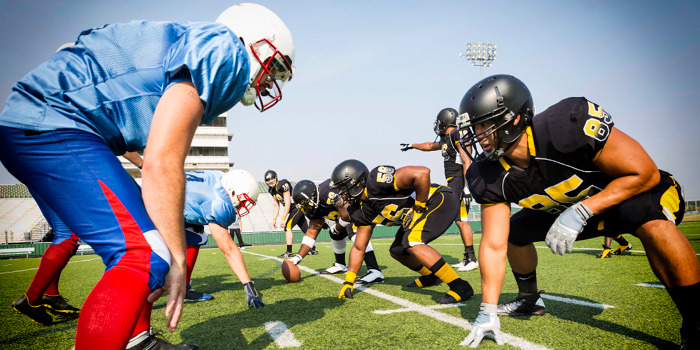- Home
- Loss Control
- Loss Control Insights
- Concussion detection for youth athletes
Each year, more than 280,000 children and teens visit the emergency department for sports-related traumatic brain injuries, including concussions, according to the Centers for Disease Control.
While most concussions aren’t life-threatening, they can have long-term effects if left untreated. Recognizing the signs, understanding recovery, and focusing on prevention are key to protecting student athletes.
What is a concussion?
A concussion is a type of traumatic brain injury caused by a bump, blow, or jolt to the head—or even a hit to the body that causes the head and brain to move quickly back and forth. This sudden movement can make the brain bounce or twist inside the skull, leading to chemical changes and sometimes damaging brain cells.
What does a concussion feel like?
People often describe concussions as feeling “foggy,” “dazed,” or “off.” Headaches, dizziness, or sensitivity to light and noise are also common.
What are the signs and symptoms of a concussion?
Concussion symptoms may appear right away or take hours to develop. Watch for:
| Physical | Cognitive | Emotional | Sleep |
|---|---|---|---|
| Headache or pressure in head | Confusion | Irritability | Trouble falling asleep |
| Nausea or vomiting | Feeling mentally foggy or slowed down | Sadness | Sleeping more than usual |
| Balance problems or dizziness | Difficulty remembering events before/after the incident | Nervousness | Sleeping less than usual |
| Fatigue | Difficulty focusing or trouble concentrating | More emotional than usual | |
| Sensitivity to light or noise | Excessive crying | ||
| Loss of consciousness | |||
| Slurred Speech | |||
| Ringing ears and blurry vision |
How long does a concussion last?
Every concussion is different. Some athletes recover in a week, while others may take several weeks or longer. Recovery depends on the individual, the severity of the concussion, and how quickly treatment begins. Patience and following medical guidance are crucial.
Can you sleep with a concussion?
Yes, it’s generally safe to sleep after a concussion once a healthcare provider has ruled out more serious injuries. In fact, rest is an important part of recovery.
How many concussions is too many?
There isn’t a single number that applies to everyone. Multiple concussions increase the risk of long-term problems, so any athlete with more than one concussion should work closely with a healthcare professional to decide if and when it’s safe to return to play.
Responding to concussions
If a student athlete takes a hit to the head, follow these steps—no matter how minor the injury seems:
- Immediate removal: When in doubt, sit them out. The sooner an athlete stops playing, the safer their recovery.
- Professional evaluation: Only a healthcare provider can diagnose a concussion. Share details such as how the injury happened, whether the athlete lost consciousness, and if they’ve had concussions before.
- Inform the guardian: Let the athlete’s parent or guardian know about the possible concussion. Provide resources about what symptoms to watch for and how long to monitor.
- Rest and recovery: Even if they feel fine, athletes should not return to play until cleared by a medical professional.
- Gradual return: Once approved, athletes should slowly reintroduce activity: Light exercise, sport-specific drills, non-contact training, then controlled contact practice before fully returning to play.
Preventing concussions
Prevention is always better than treatment. Here’s how to reduce the risk:
- Proper gear: Wear well-fitting, sport-specific helmets and safety equipment.
- Skills education: Coaches should teach safe techniques and discourage risky plays.
- Immediate reporting: Encourage athletes to report all head impacts or symptoms, no matter how small.
By knowing the signs, acting quickly, and prioritizing prevention, coaches, parents, and athletes can work together to reduce the risks of concussions. Protecting young athletes today not only keeps them safe in the moment, but also protects their long-term health, well-being, and love for the game.
Learn more
Get in touch
Need help? We’re here for you! Whether you have questions or need personalized assistance, your local office is ready to support you.
Loss Control Insights
Stay informed with the latest news and receive actionable safety tips, all carefully curated by our team of experts.
